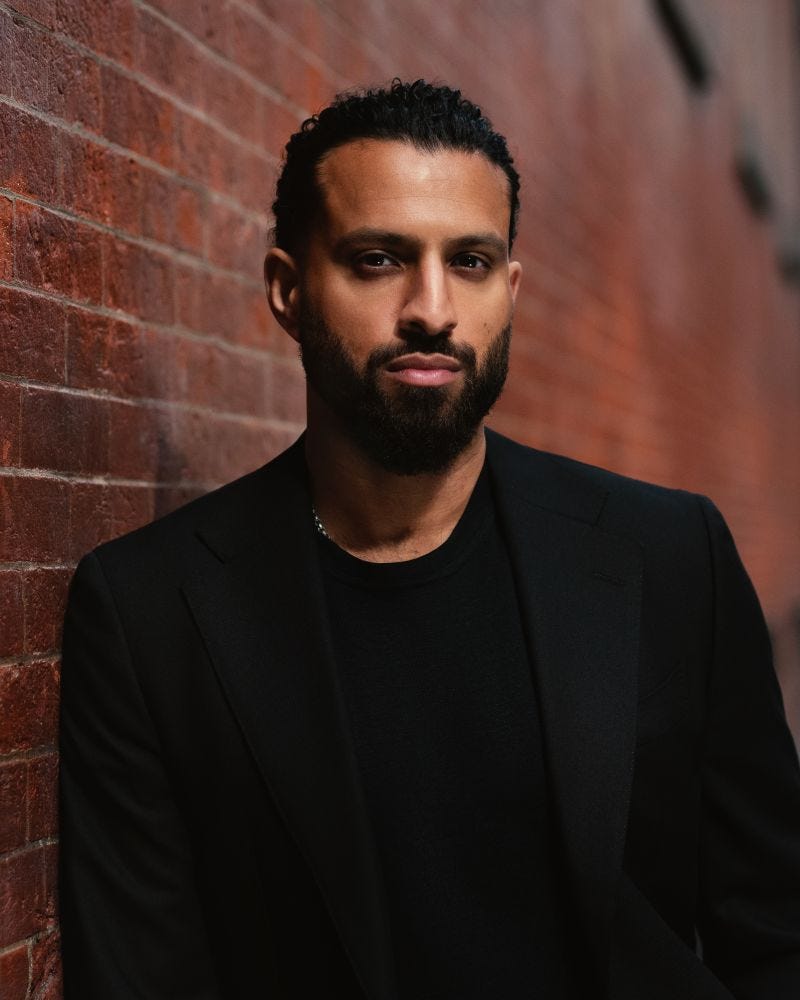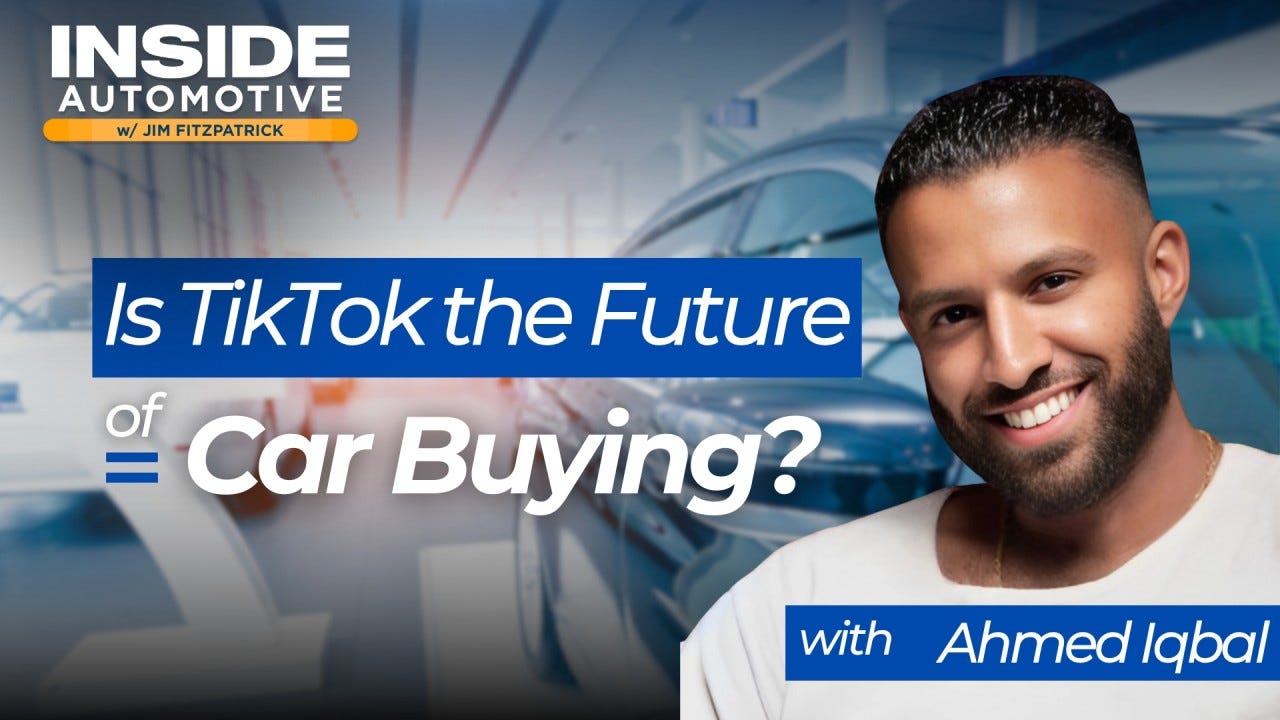Cadillac F1 Hires Creator-Focused CMO
Ahmed Iqbal, formerly at TikTok and Twitter, seeks to change how the game is played in F1
Cadillac F1 appointed a CMO.
In many cases, there’s not much hype around the hiring of someone who has nothing to do with the on-track product.
But this isn’t just another CMO appointment.
It’s the moment a Formula 1 team decided to build itself from the creator economy up, not bolt creators onto a traditional motorsport marketing structure as an afterthought.
Meet Ahmed Iqbal.
Iqbal isn’t your typical motorsport marketing executive. He’s a bridge-builder between two worlds that rarely intersect: legacy automotive manufacturing and platform-native digital culture. And for a team entering F1 as the first fully American constructor since the sport exploded into mainstream consciousness, that hybrid expertise is valuable.
The Person Who Taught Dealerships to Love TikTok
Here’s what makes Iqbal’s background fascinating: he’s spent the last seven years teaching the world’s most conservative marketers how to win on platforms they fundamentally didn’t understand.
At Twitter, he built the global automotive strategy playbook. At TikTok for the past two and a half years, he did something even harder: convinced dealers that a platform known for dance challenges could actually sell cars. Under his leadership, TikTok became a legitimate automotive discovery and commerce engine. 56% of users visit to watch vehicle reviews. One-third are actively shopping.
The best part is that Iqbal didn’t dumb down automotive content. He did it by understanding that complexity becomes engagement when you meet people where they already are, in formats they already love.
Wind tunnel testing? That’s a 60-second explainer. Tire compound decisions? That’s a creator walking through strategy in the paddock. Race weekend chaos? That’s access-driven storytelling that makes fans feel like insiders.
For new fans, you have to go to where they are, versus trying to pull them into where you are.
Why Formula 1 Needed This Person Right Now
Formula 1’s American growth story is well-documented. Drive to Survive. Three U.S. Grand Prix. Sold-out races. 25% of American adults now follow the sport, at least casually, with Gen Z leading the charge.
But the challenge nobody wants to say out loud is that Cadillac is entering as the 11th team into a paddock where teams like Ferrari, Mercedes, McLaren, Red Bull, and Williams have decades of cultural equity.
You can’t just out-spend, out-sponsor, or out-activate your way into relevance.
Traditional motorsport marketing assumes you have equity to leverage, whether it be heritage, trophy cases, driver fandoms, or legacy partnerships.
Cadillac F1 in 2026 has none of that.
But what I see they do have is potentially more valuable: the freedom to build without legacy constraints.
This is where Iqbal’s vision gets interesting.
The Inverted Marketing Model
Most teams treat creators as bolt-on distribution channels. Cadillac, if Iqbal’s early signals hold, is building creators into the content infrastructure itself.
In his first interview with Boardroom after the appointment, Iqbal laid out a philosophy that should make every motorsport marketer rethink their 2026 strategy: “For new fans, you have to go to where they are versus trying to pull them into where you are.”
That sounds obvious until you unpack what it actually means operationally.
It means every day is a content day, not just race weekends. The 350+ days between Grand Prix become the primary canvas for storytelling. Factory tours. Engineering challenges. Testing failures. The grind of building a competitive car from scratch becomes the narrative backbone.
It means creators are partners, not vendors. Instead of commissioning one-off sponsored posts, you embed creators in the actual story. You give them access that traditional media never gets. You let them bring their audiences into your journey rather than constantly trying to extract your story through their channels.
It means treating social platforms as the primary broadcast infrastructure, not as a supplement. This isn’t radical in beauty, gaming, or fitness. But, in Formula 1, where broadcast rights still drive billions in revenue and teams carefully control media access, it’s a fundamentally different operating model.
Iqbal’s goal for Year One is revealing: “that everyone at the end of that season is like, I’m on that journey with that team that’s building something from scratch.”
The Economics Actually Work
Here’s where the strategy moves from aspirational to pragmatic.
Formula 1 teams collectively pulled in $2.04 billion in sponsorship revenue in 2024. Race wins generate up to $26 million in advertising value equivalency.
And yet, creator-generated content typically outperforms brand content by 2-3x in engagement and trust.
Red Bull Racing saw merchandise sales jump 40% and social followers increase by 1.2 million after their dominant 2023 season. Cadillac realistically won’t be winning races in 2026 or 2027. Still, they can win the content game, the access game, the storytelling game, all while building a fanbase that’s invested in the journey before the car is competitive.
The broader Cadillac brand needs it. While the marque posted strong sales growth recently, it’s still fighting perception battles with younger luxury buyers who default to German brands. Formula 1 offers a stage to redefine Cadillac for Gen Z, who will dominate the luxury market by 2029.
What This Means for Everyone Watching
If Cadillac executes Iqbal’s vision, they’ll prove something that will reshape motorsport marketing:
That you can build a competitive brand position through creator partnerships and platform-native content before you’re competitive on track.
I fully believe the traditional motorsport marketing funnel—win races, gain fans, sell sponsorships, move merchandise—can be inverted when you understand modern attention economics.
That a team’s value isn’t just its constructor’s championship position, but its ability to generate cultural relevance across platforms where the next generation of fans already live.
The risks are real. Cadillac still has to build a car that scores points. The team’s operations span multiple continents and time zones, which complicates the “scrappy underdog” narrative when you’re GM-backed.
And there’s always the authenticity test. Creator audiences can smell corporate content masquerading as community building from a mile away.
Iqbal’s appointment suggests Cadillac understands that modern motorsport isn’t just about racing anymore. It’s about storytelling infrastructure. It’s about who controls the narrative between races. It’s about building communities that feel like participants, not spectators.
Formula 1’s next phase of growth won’t be won by the teams with the most significant sponsorship budgets or the most trackside activations. It’ll be won by the teams that understand a compelling 60-second creator collaboration can generate more lasting fan engagement than a $5 million title sponsorship.
McLaren, Red Bull, and Mercedes are learning this incrementally, retrofitting creator strategies onto existing marketing structures. Cadillac F1, entering fresh, has the opportunity to be platform-native from day one.
Whether they actually pull it off is the defining question of their debut era.
But for creators, strategists, and anyone watching how modern sports properties get built, Ahmed Iqbal’s hire marks an inflection point.
And if you understand both the creator economy and the attention dynamics that now define how people discover, consume, and engage with sports content, you know exactly why this matters.
If Iqbal executes what he’s telegraphing, Cadillac F1 won’t just be America’s home team. They’ll be the first truly platform-native motorsport property at the highest level of the sport.
Business of Speed will be at the Las Vegas Grand Prix! If you’re going to be in town at all that week, let’s connect.






